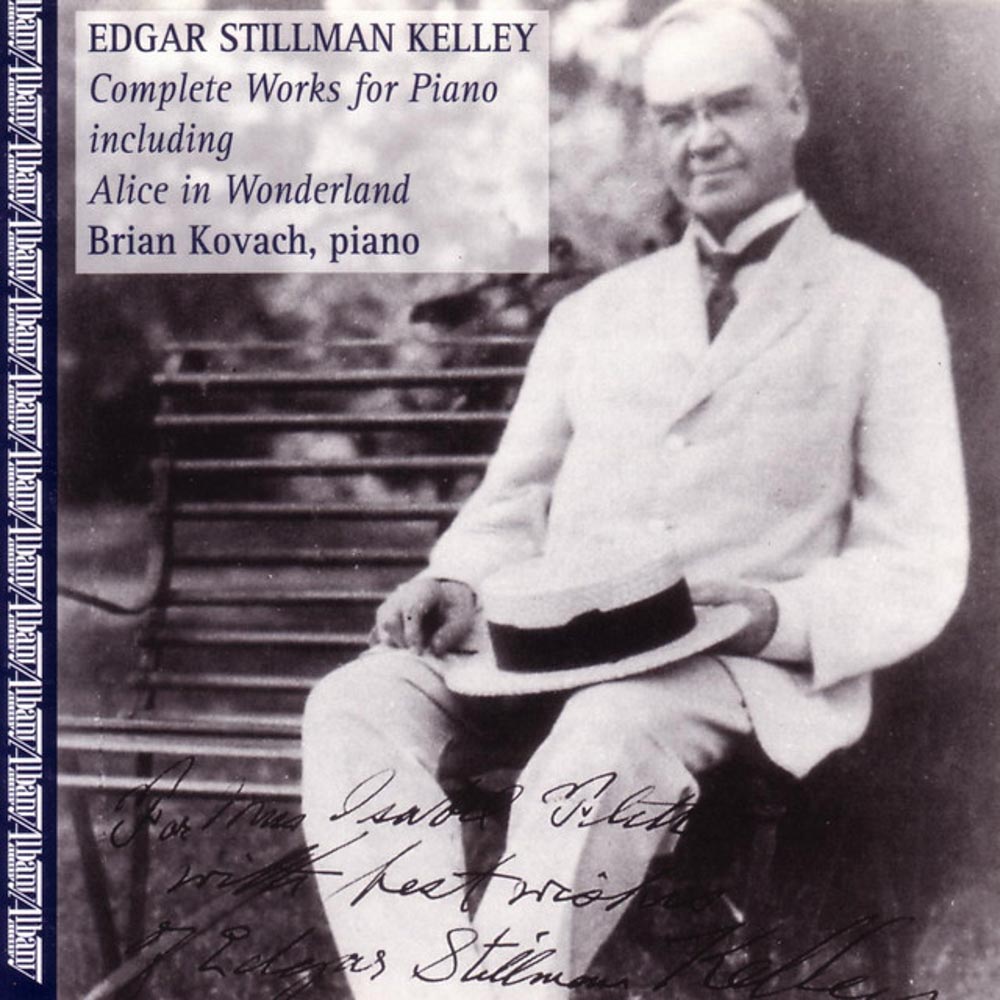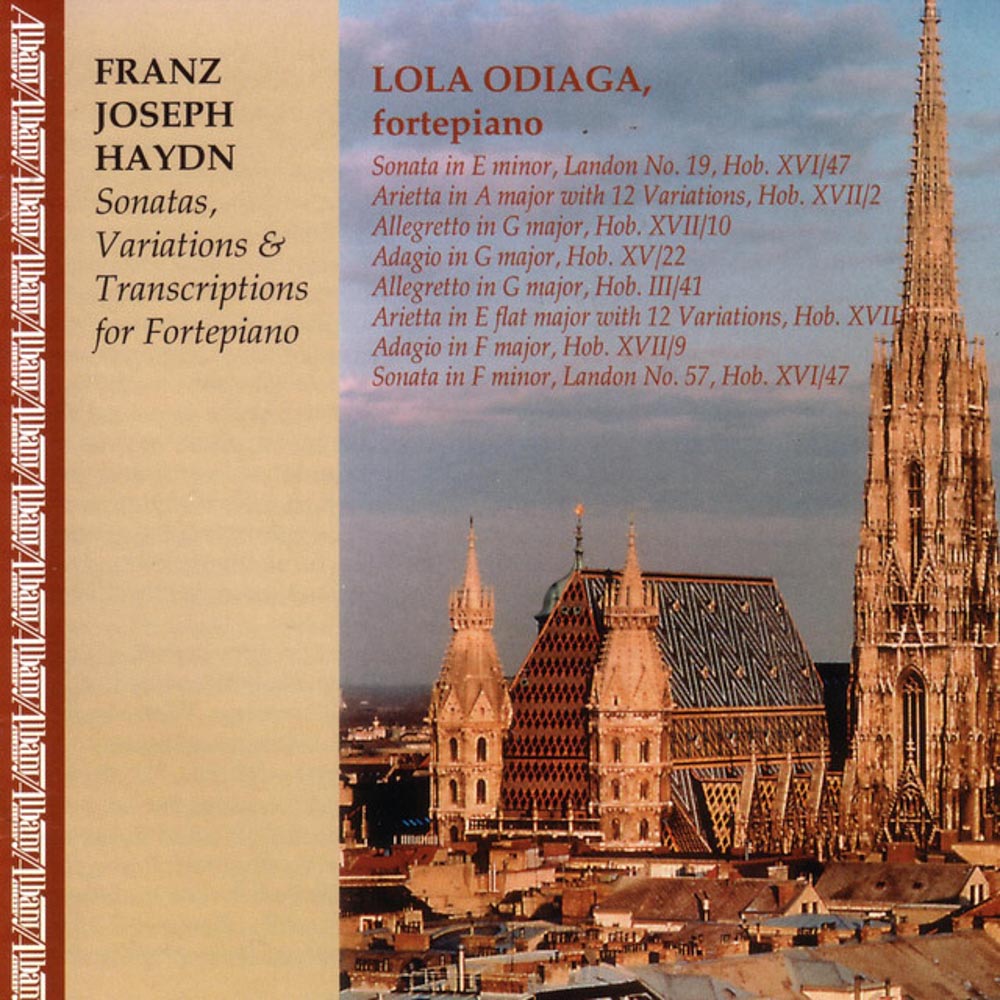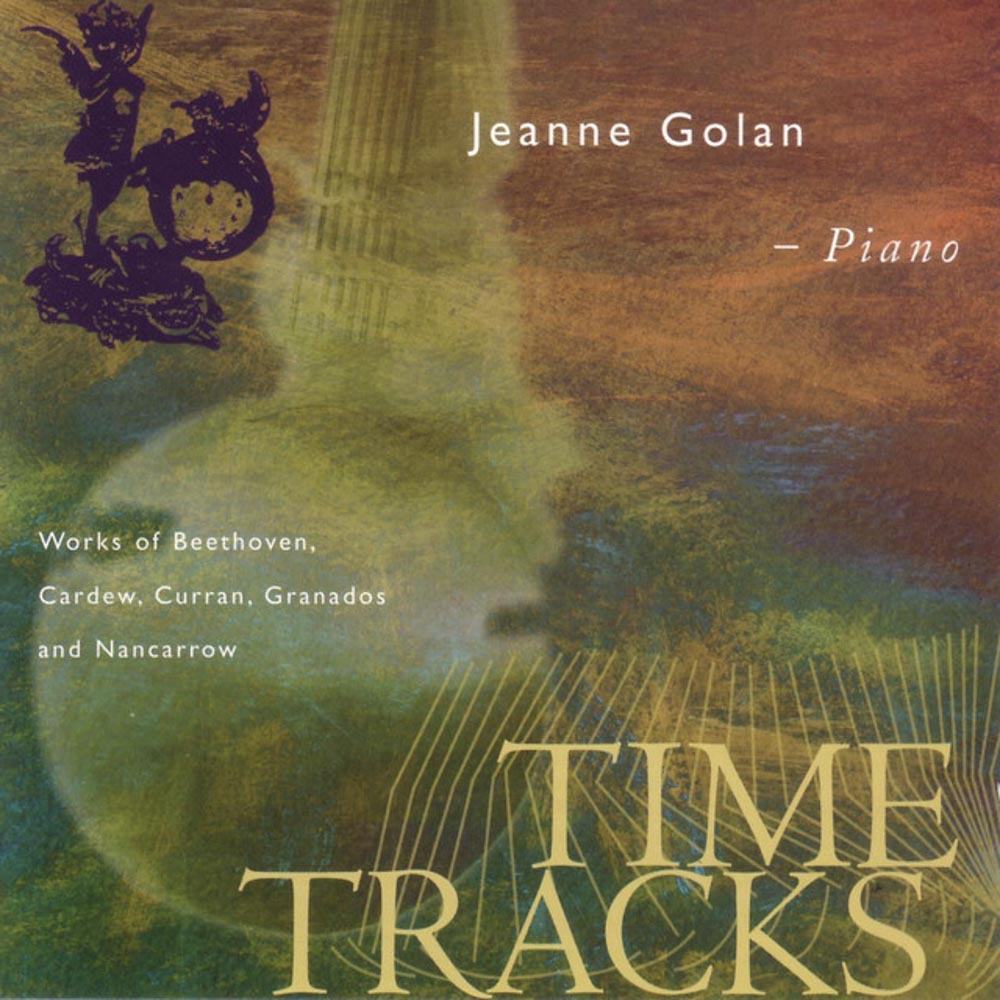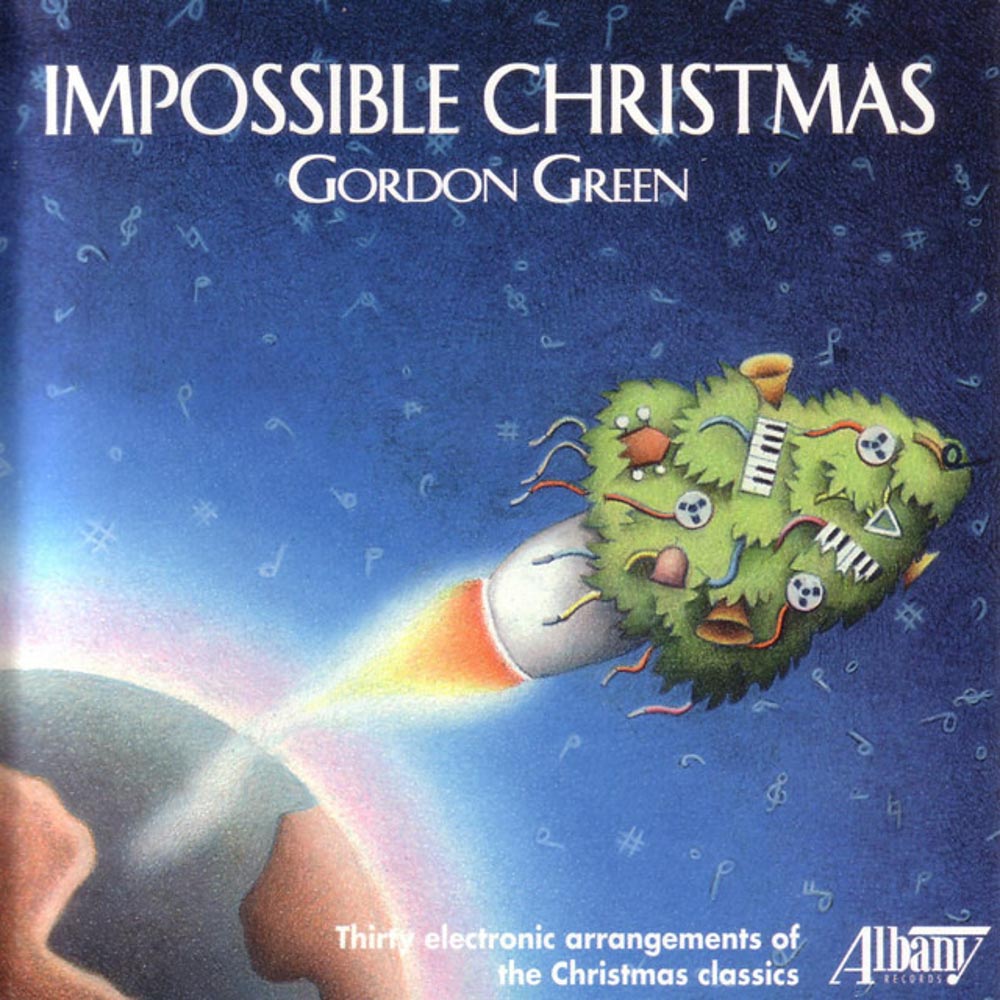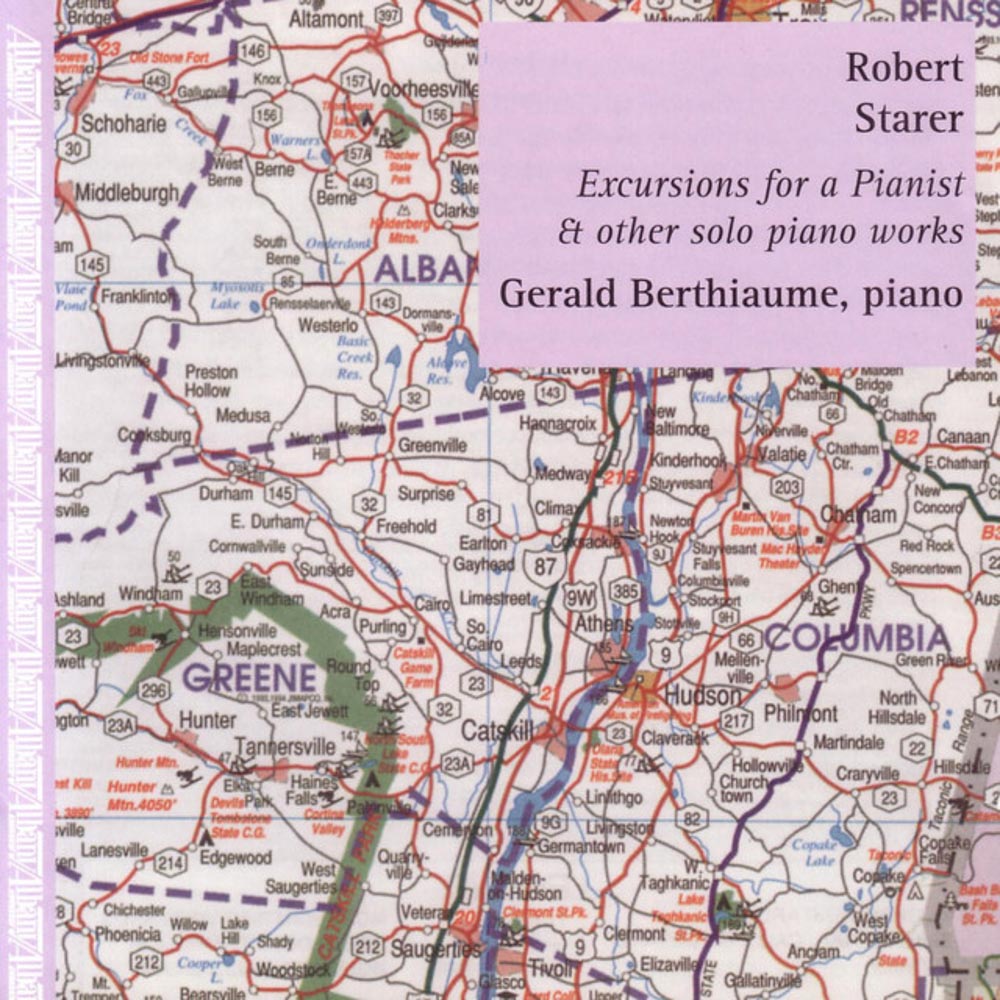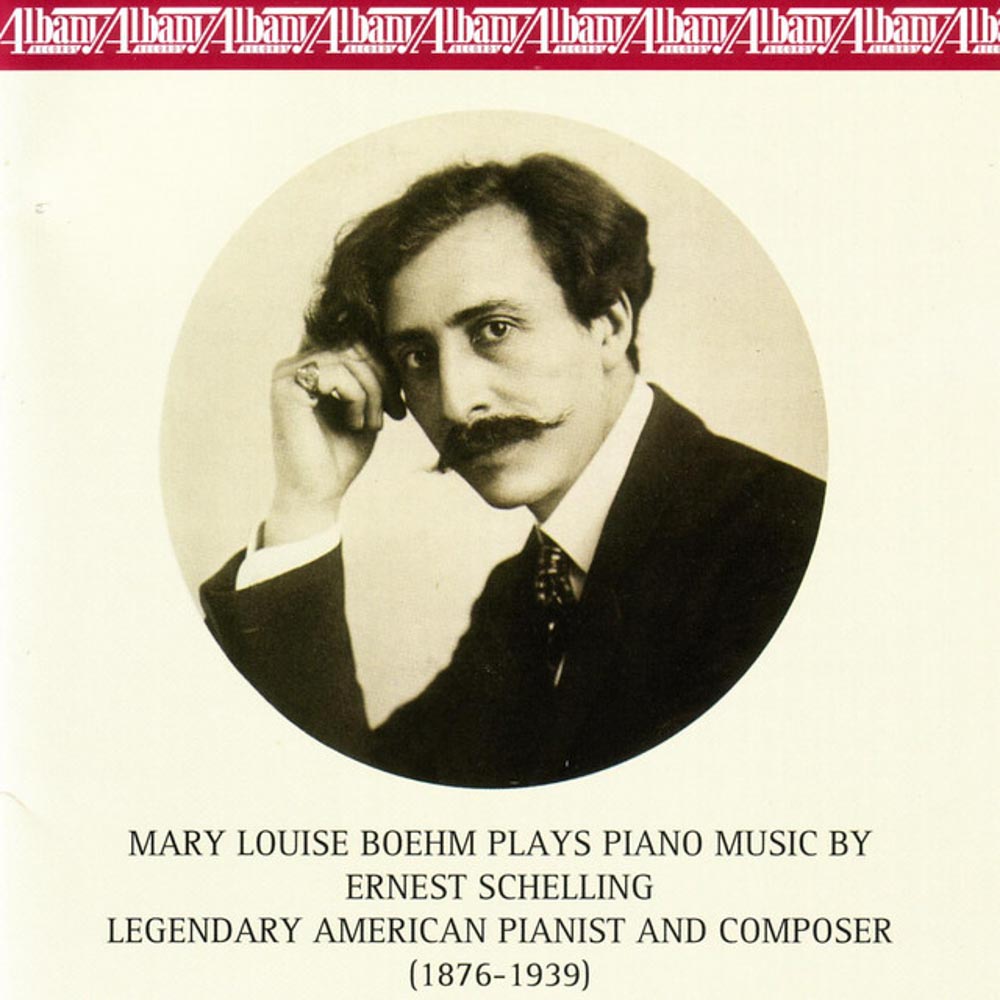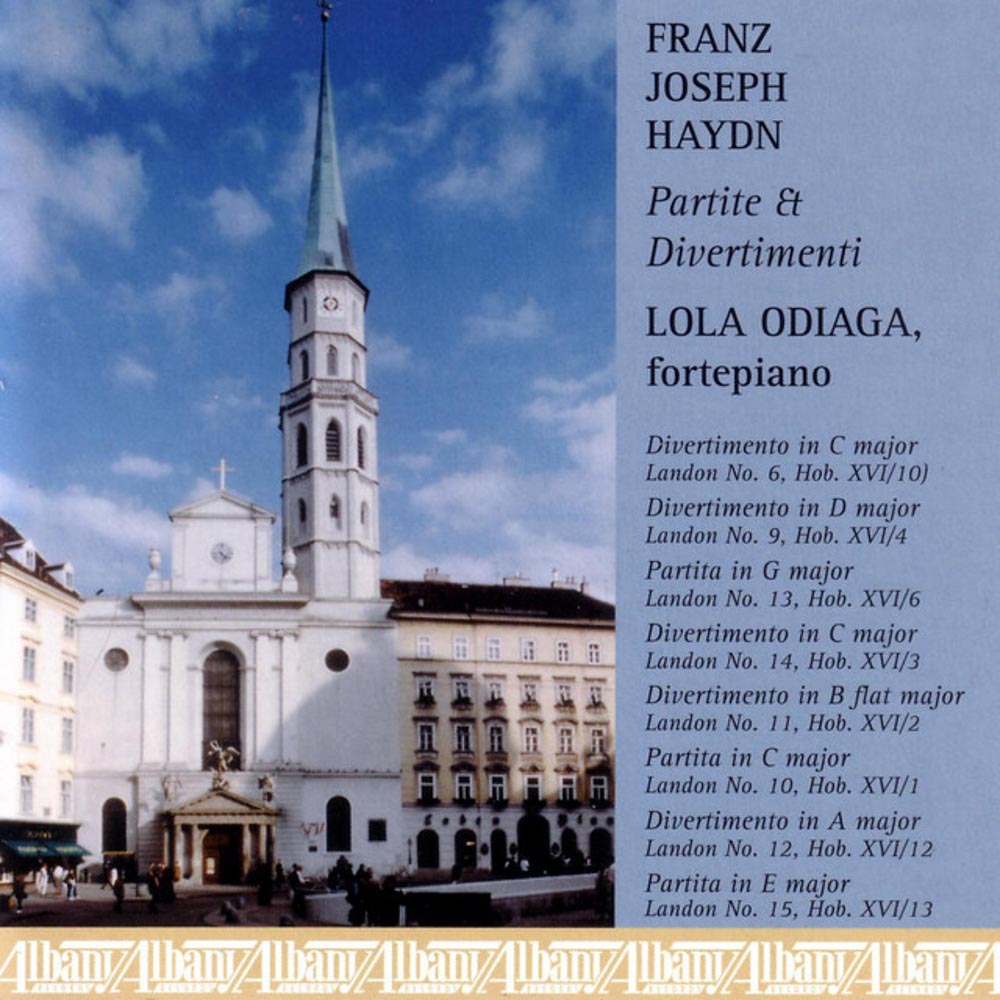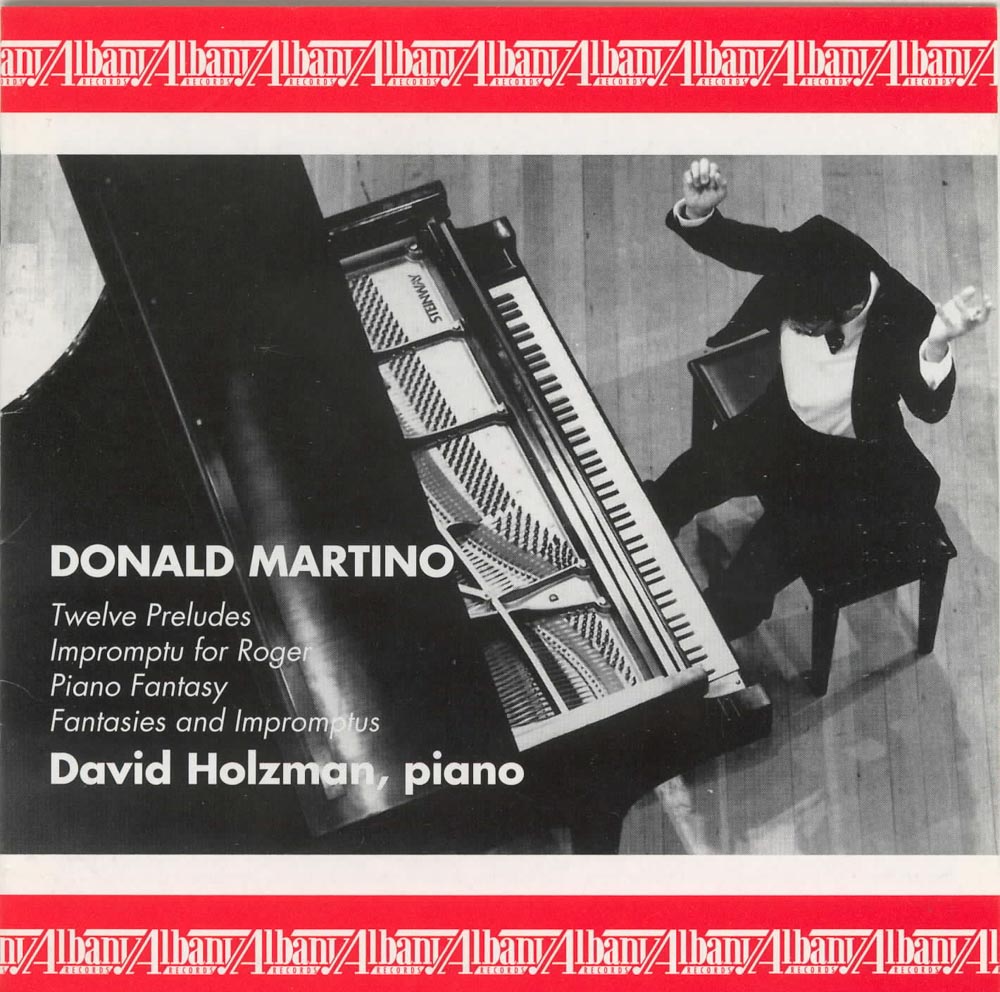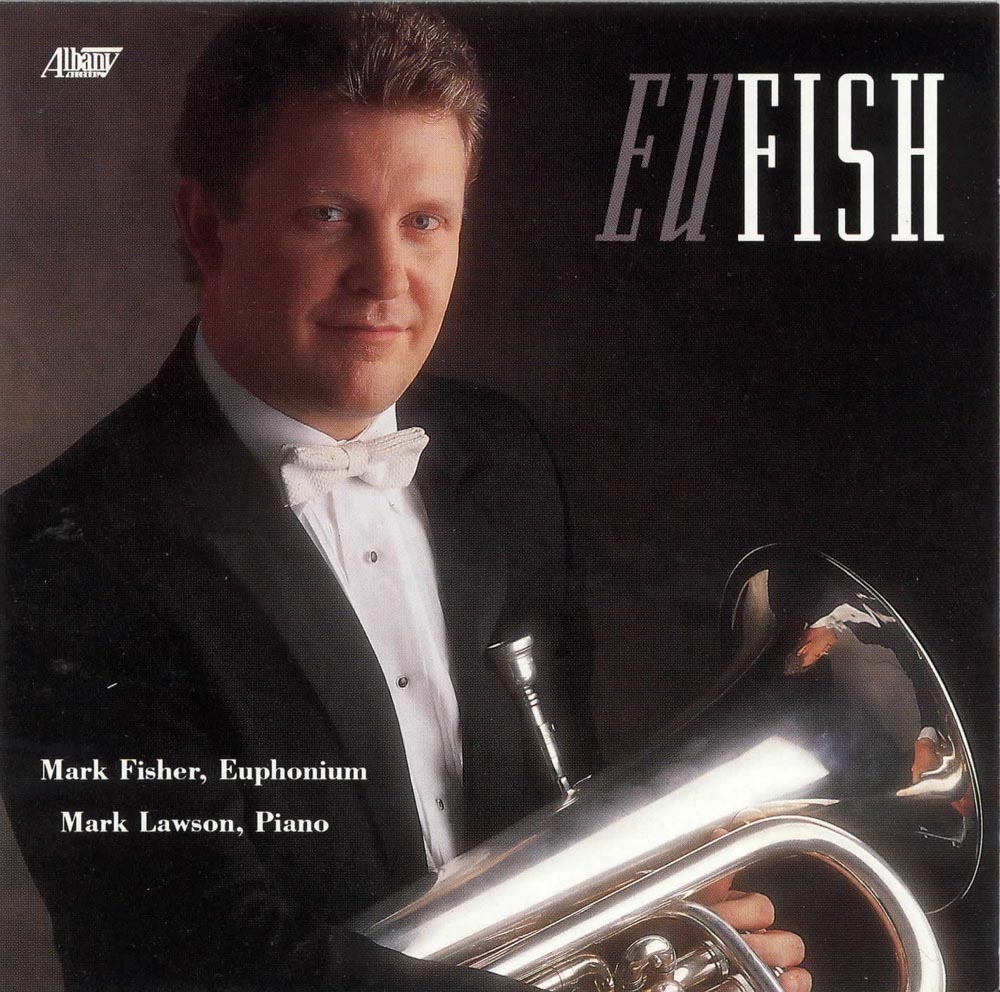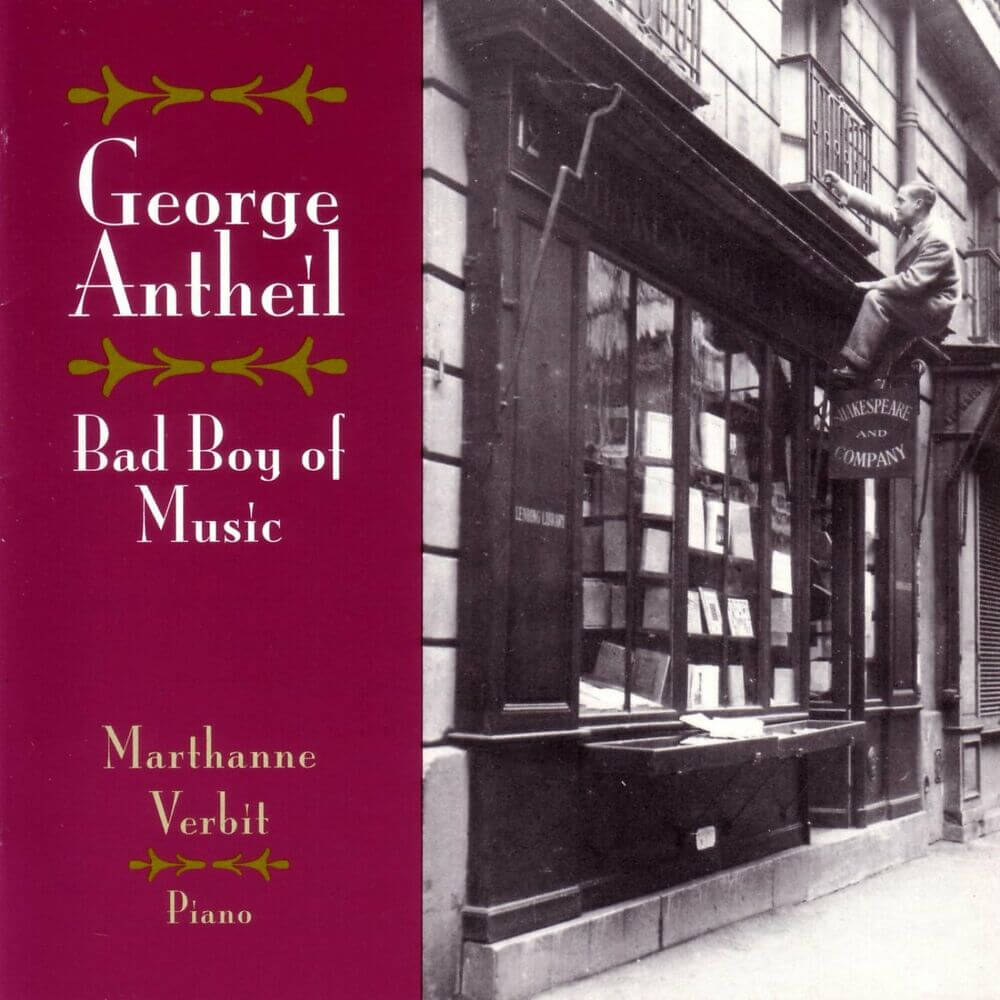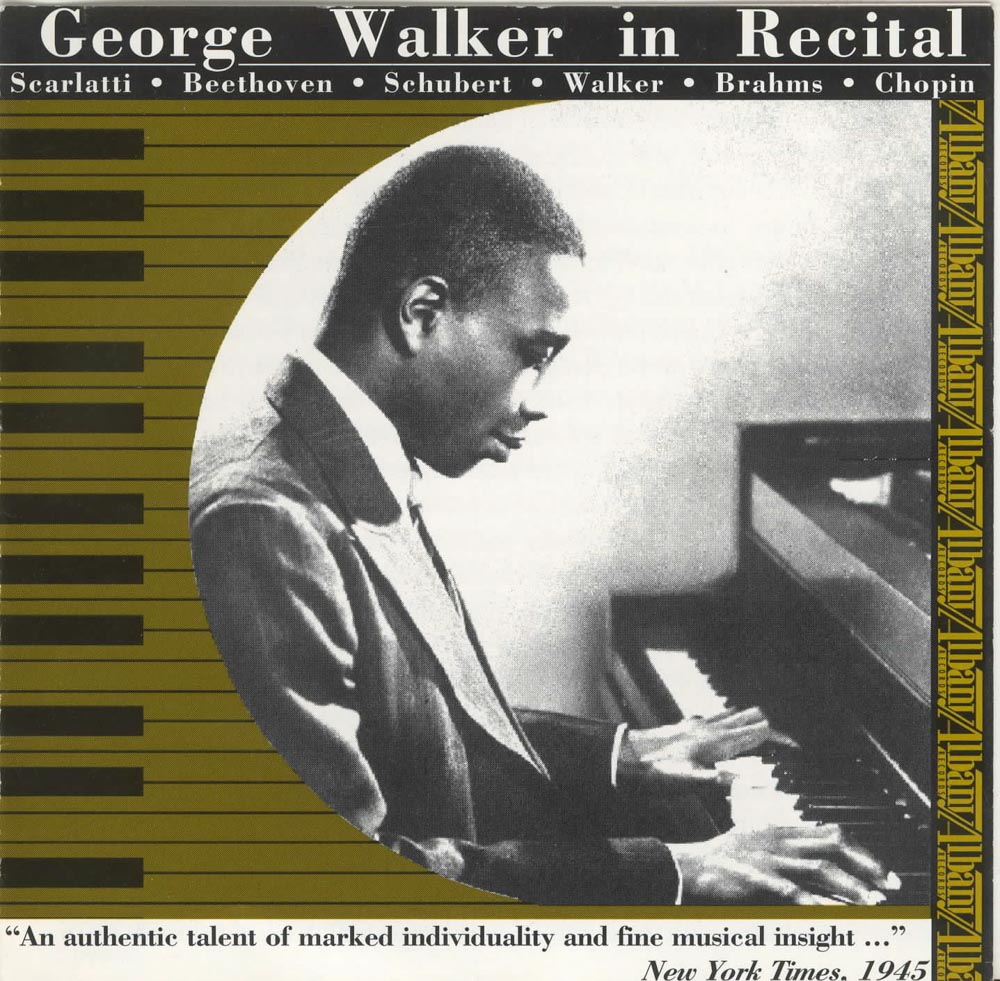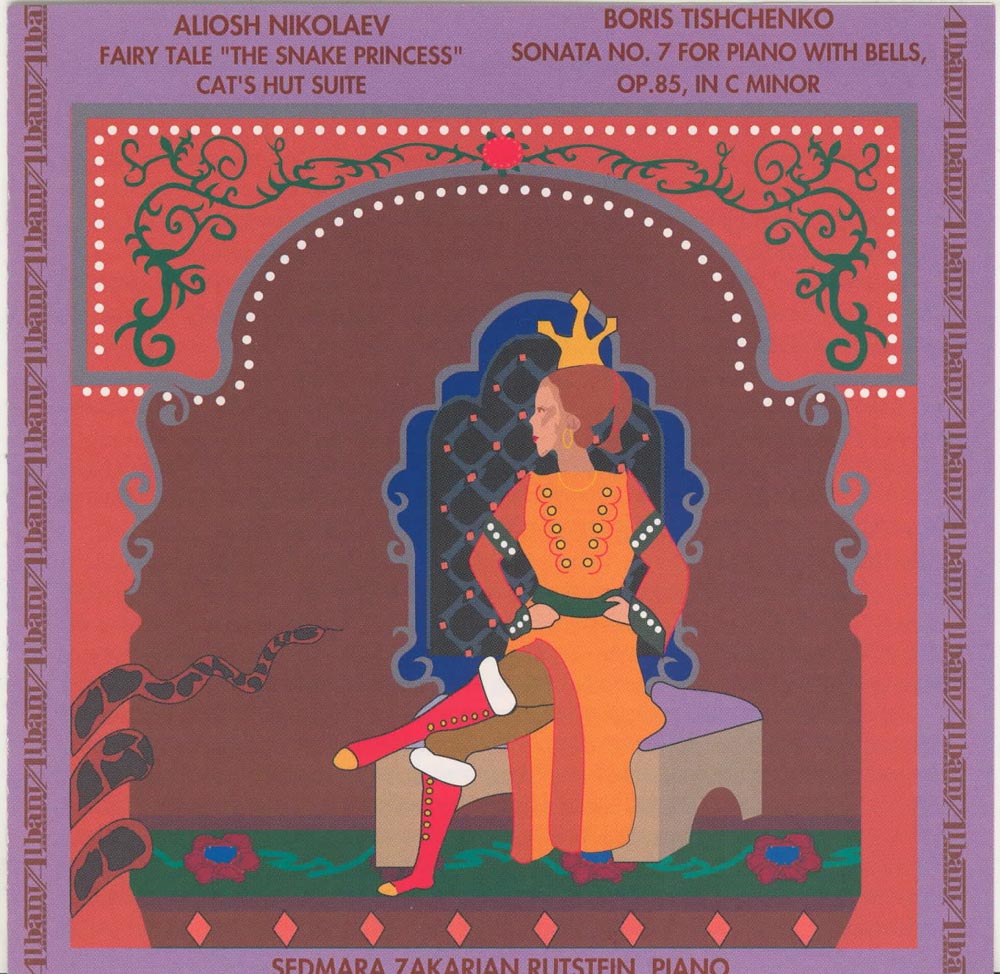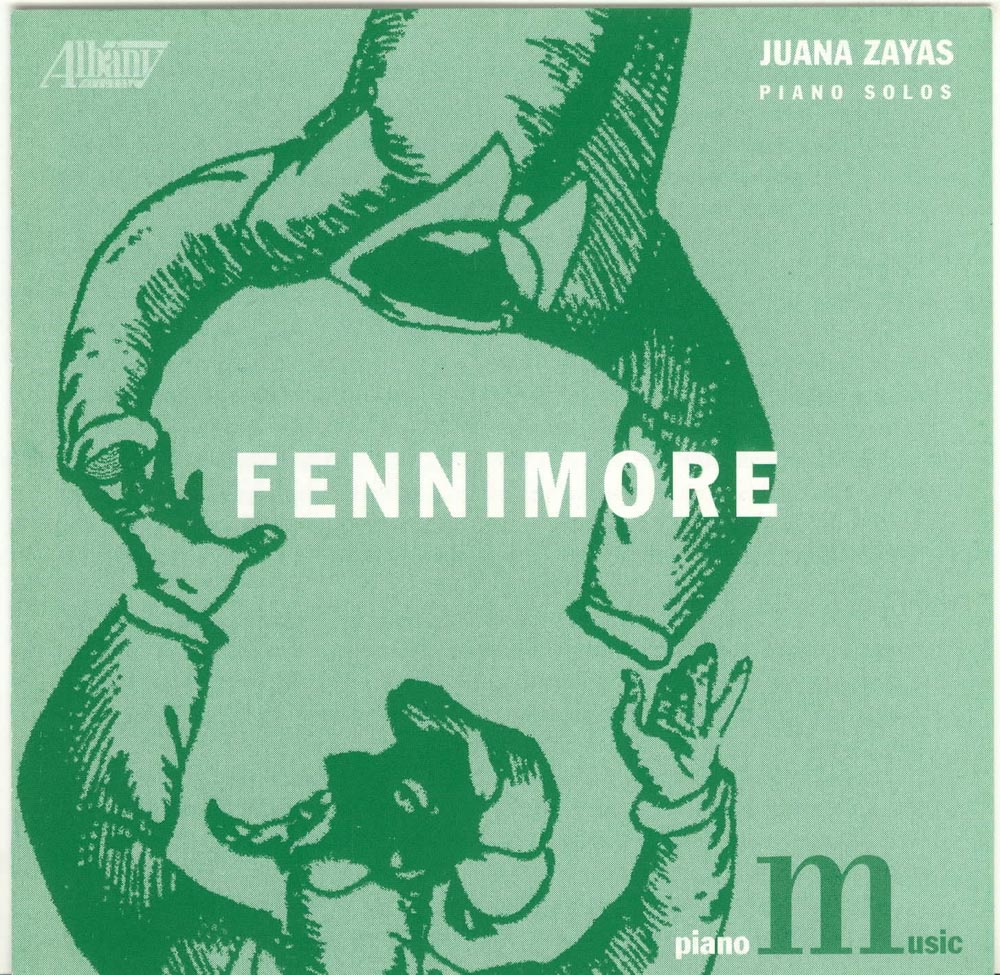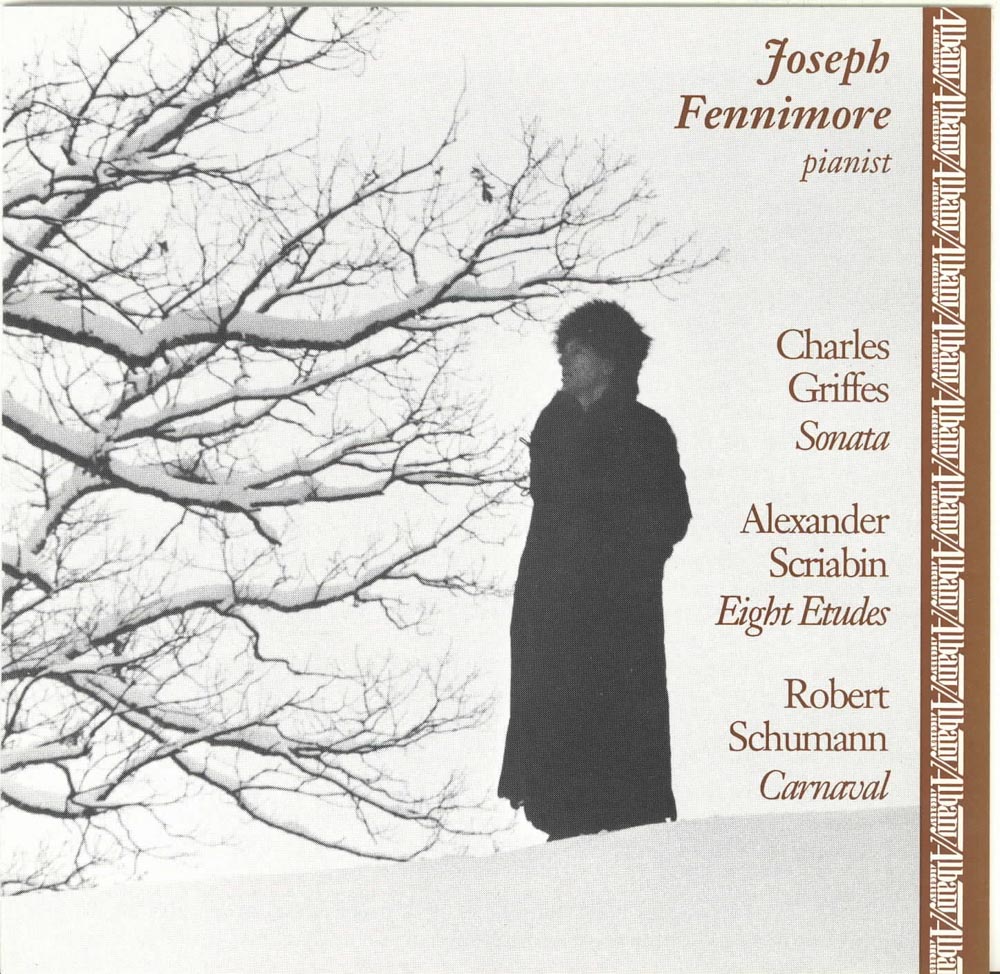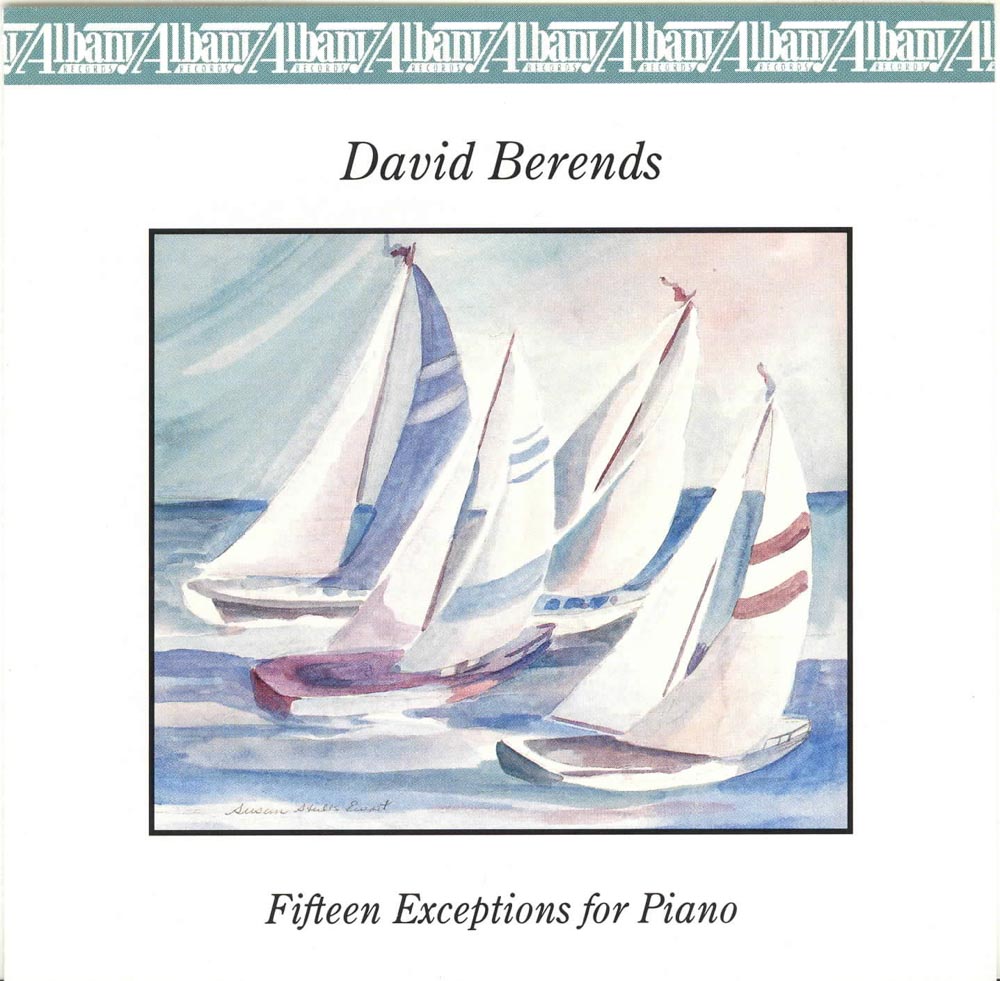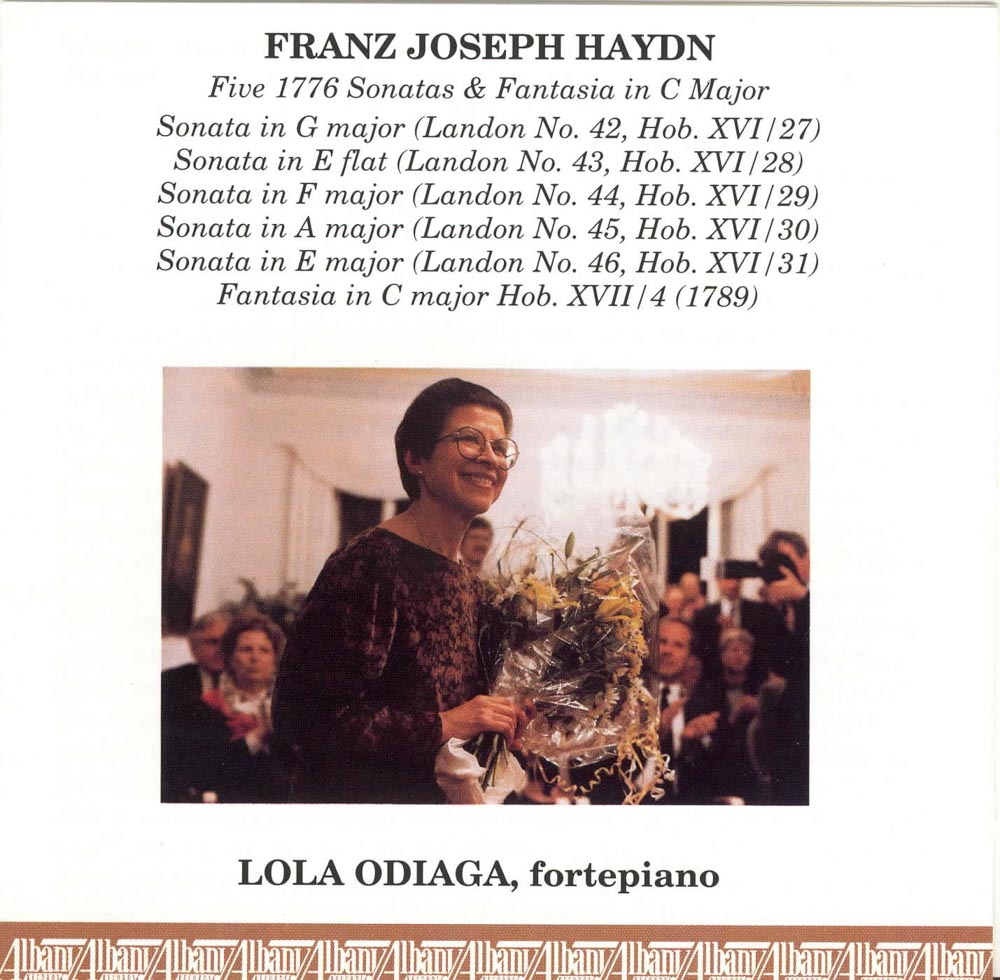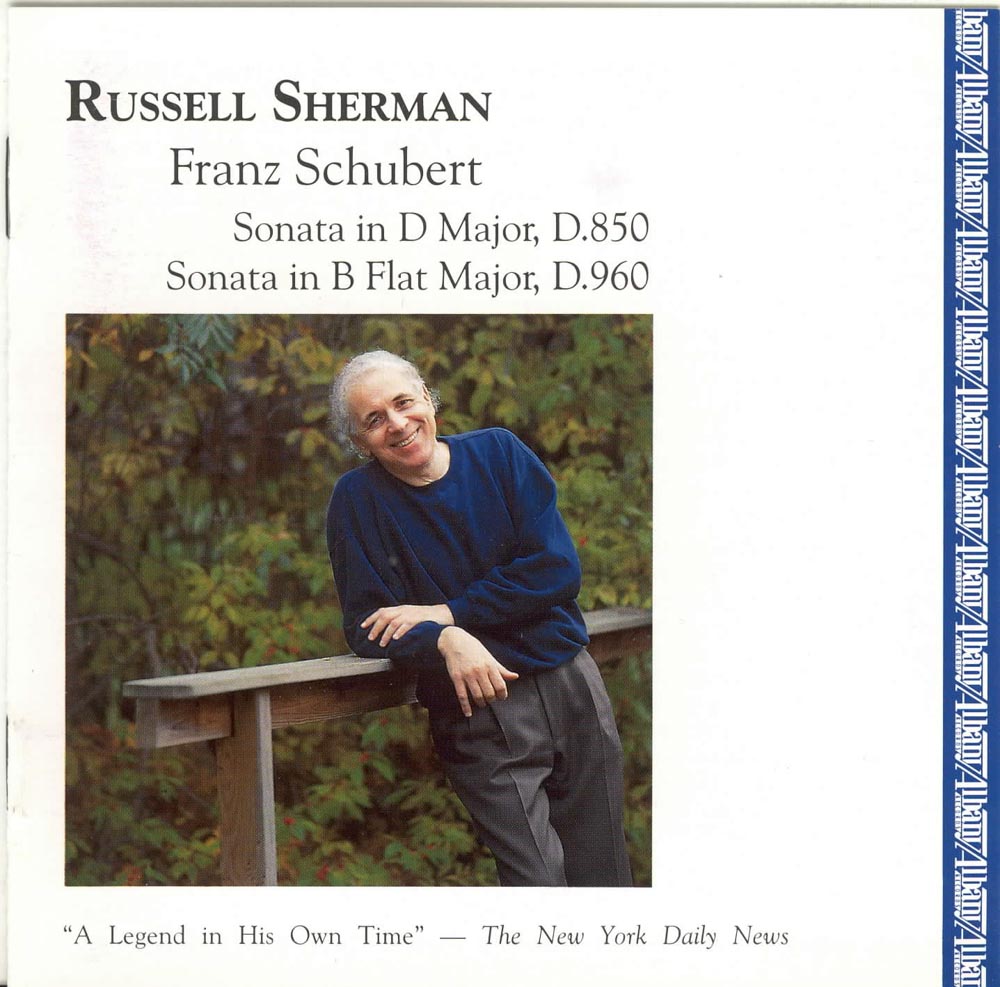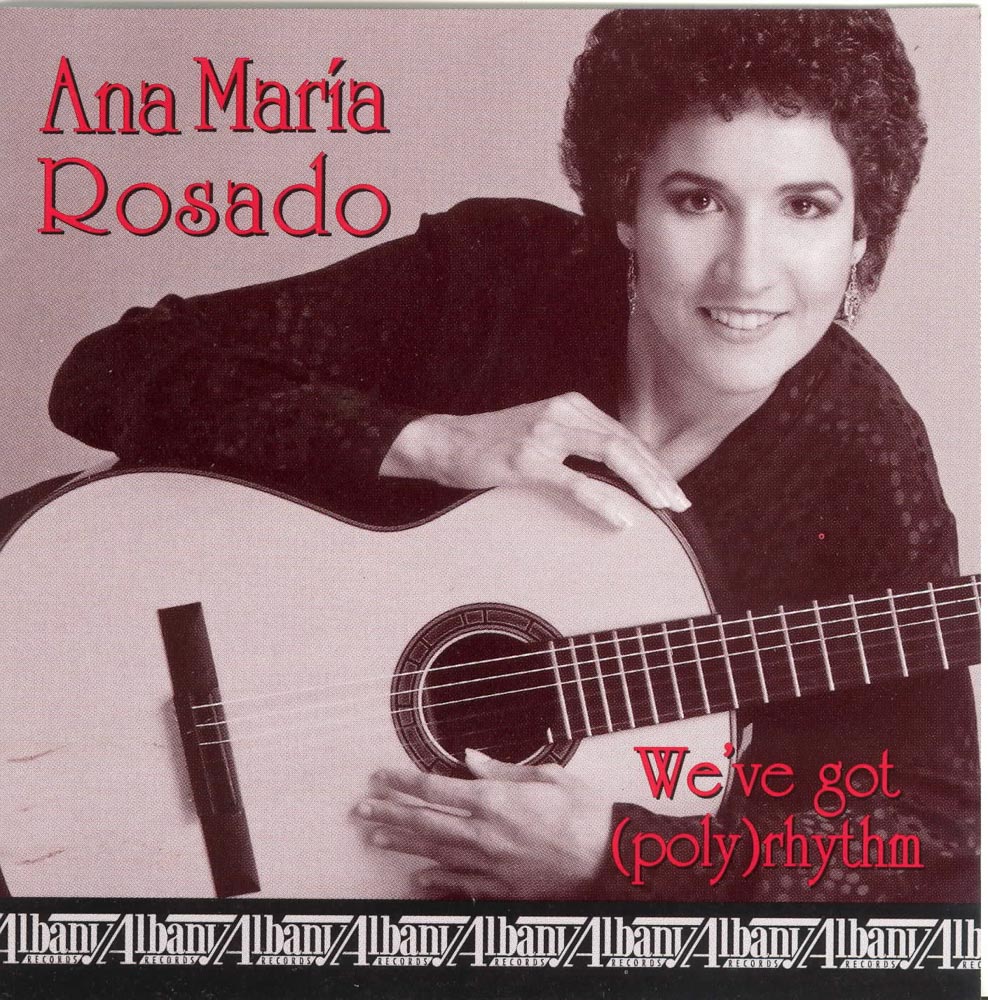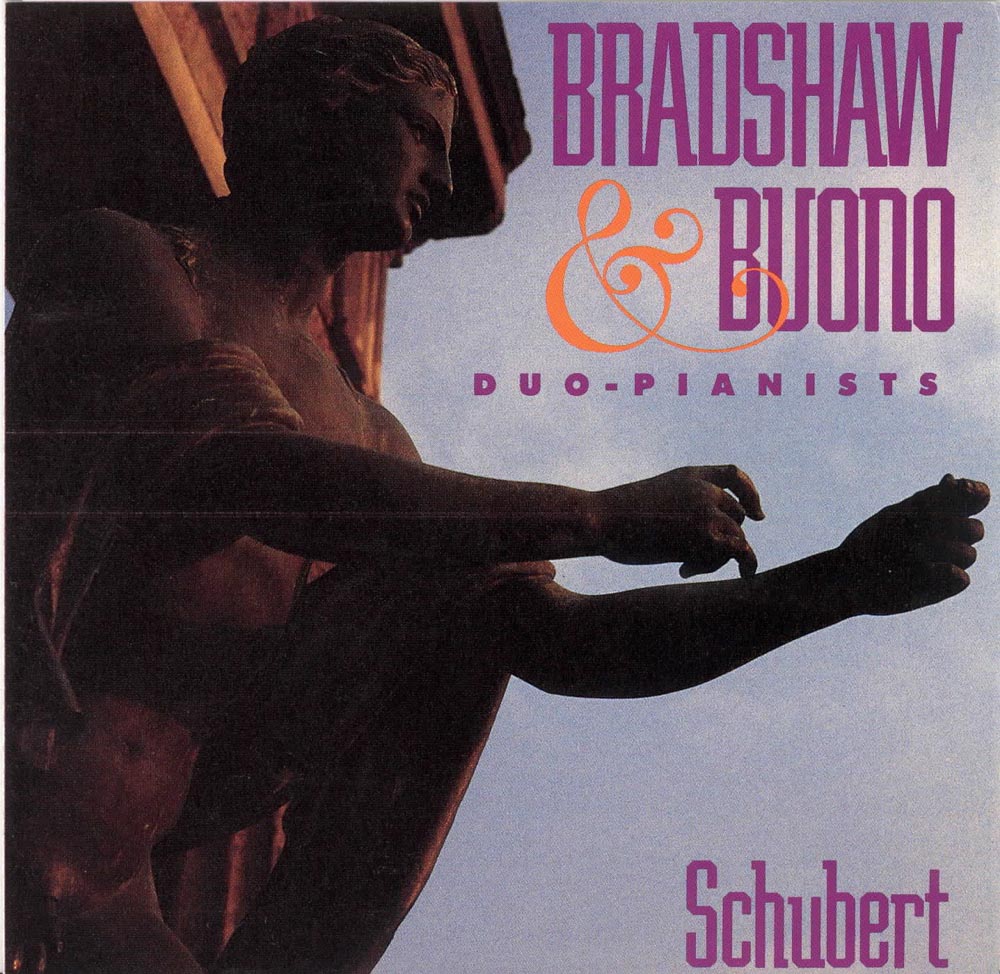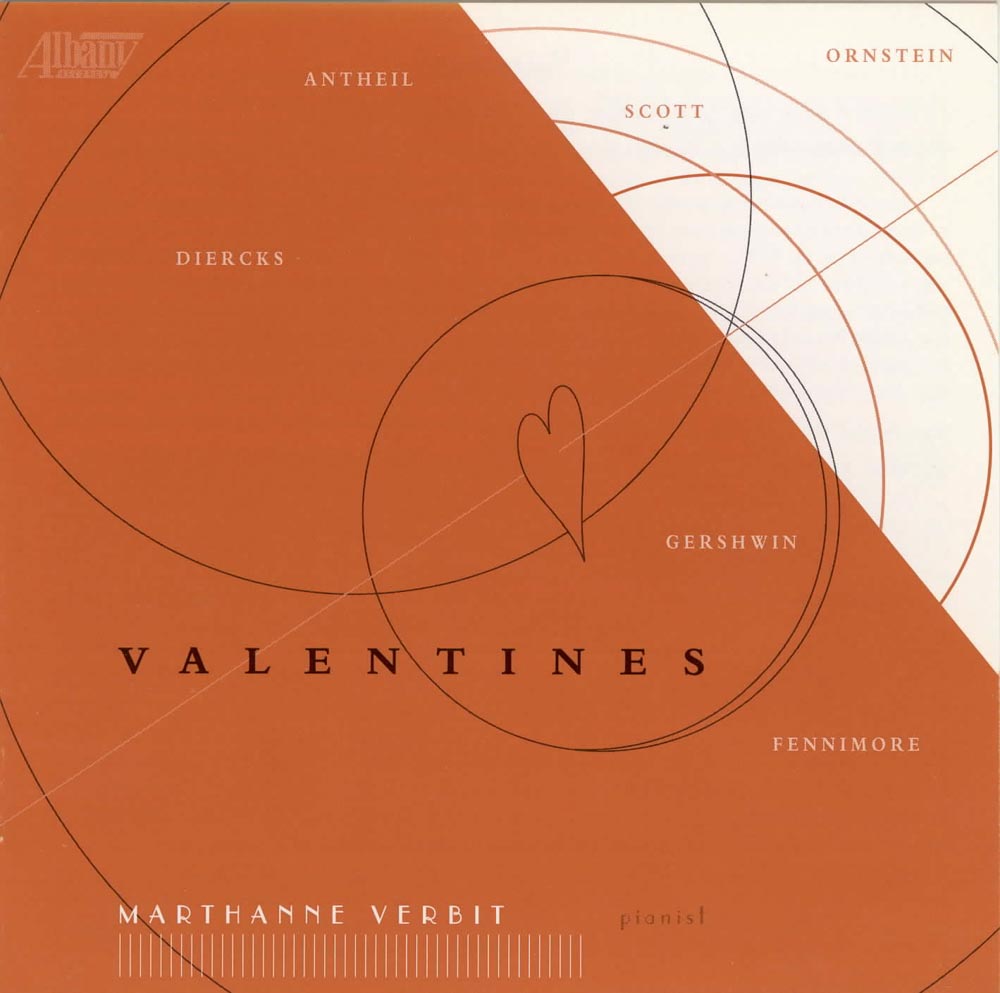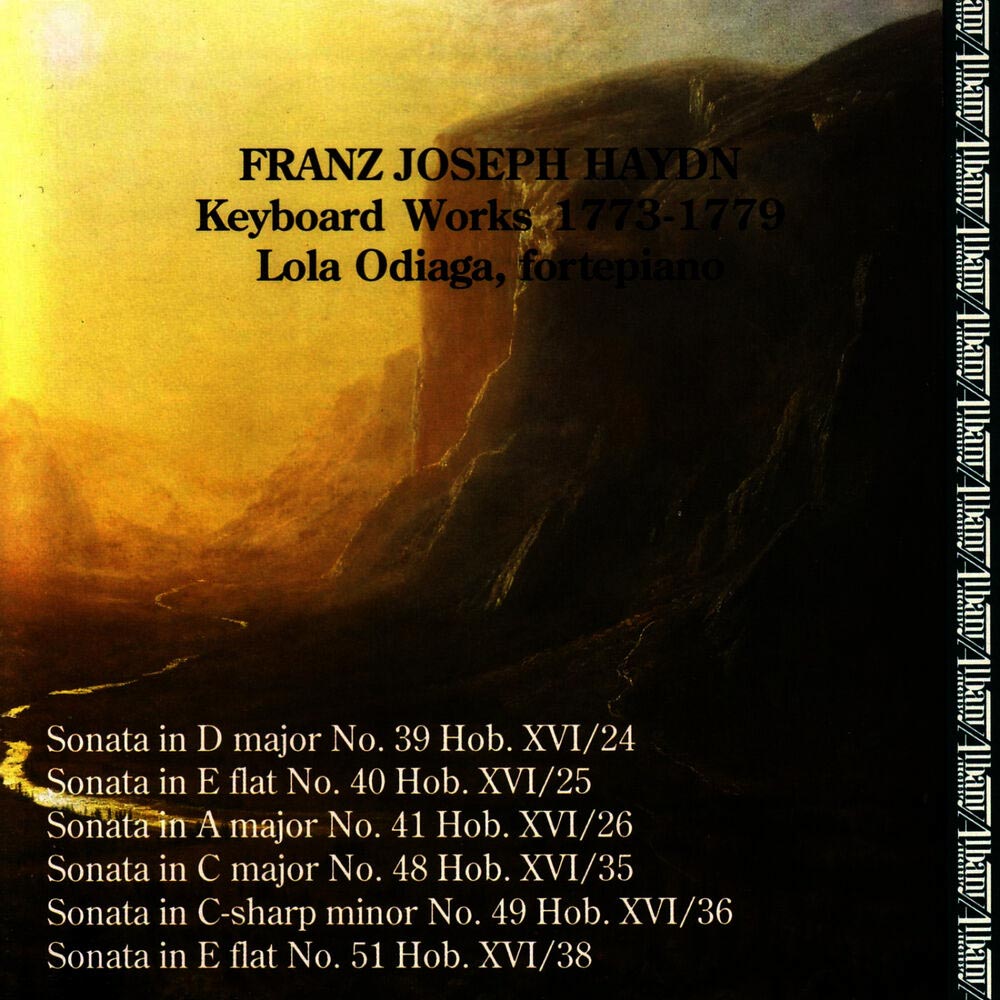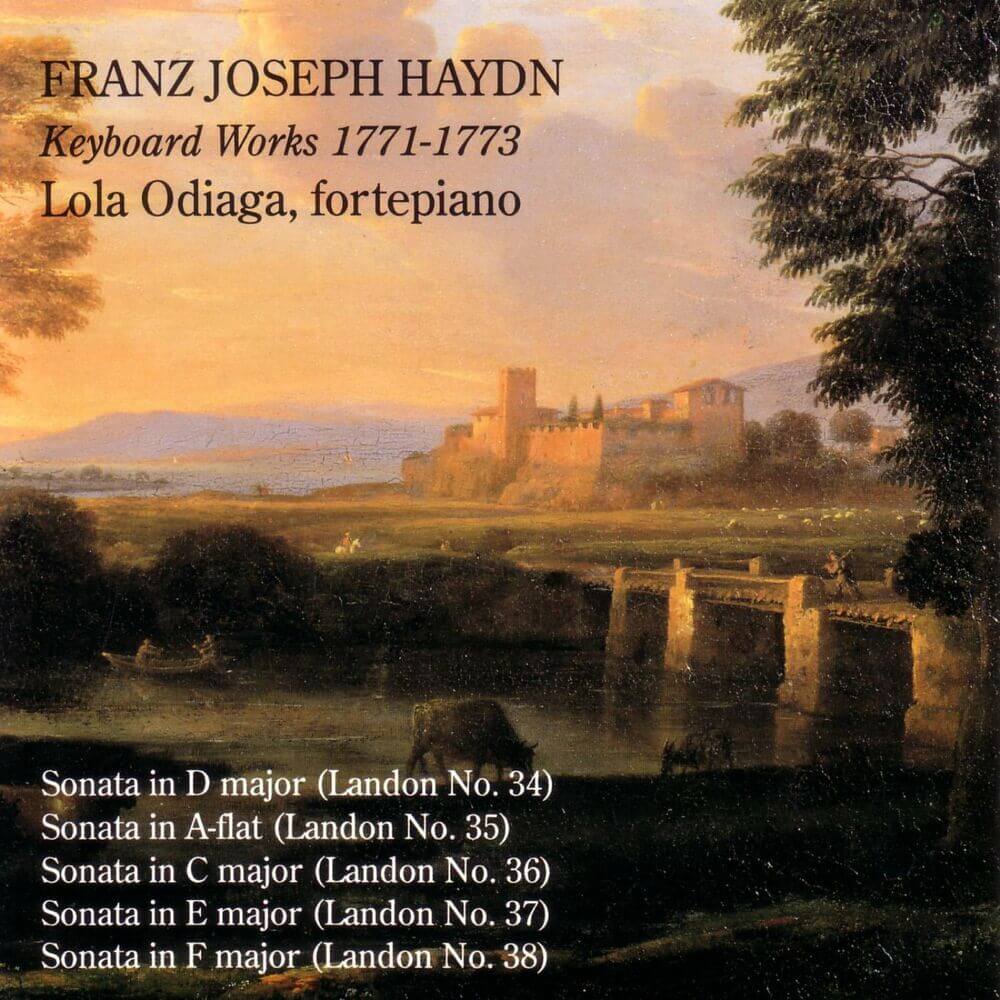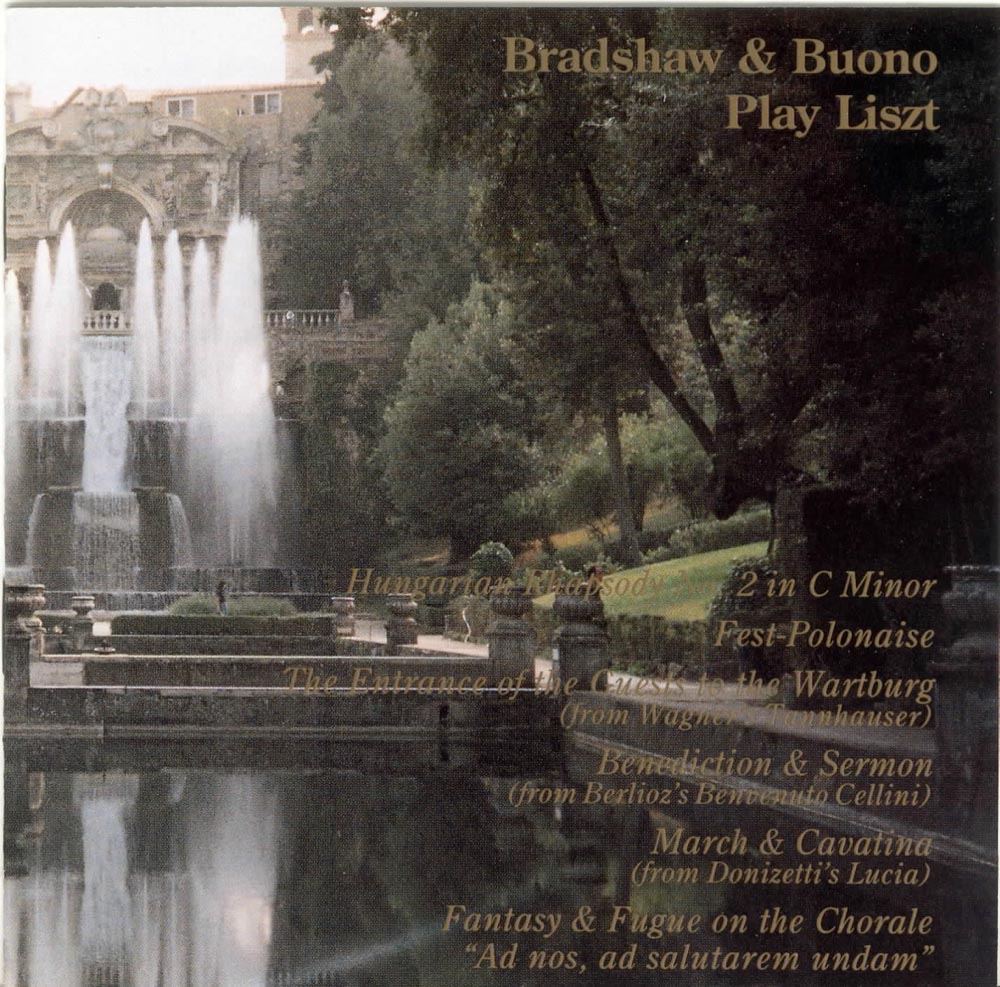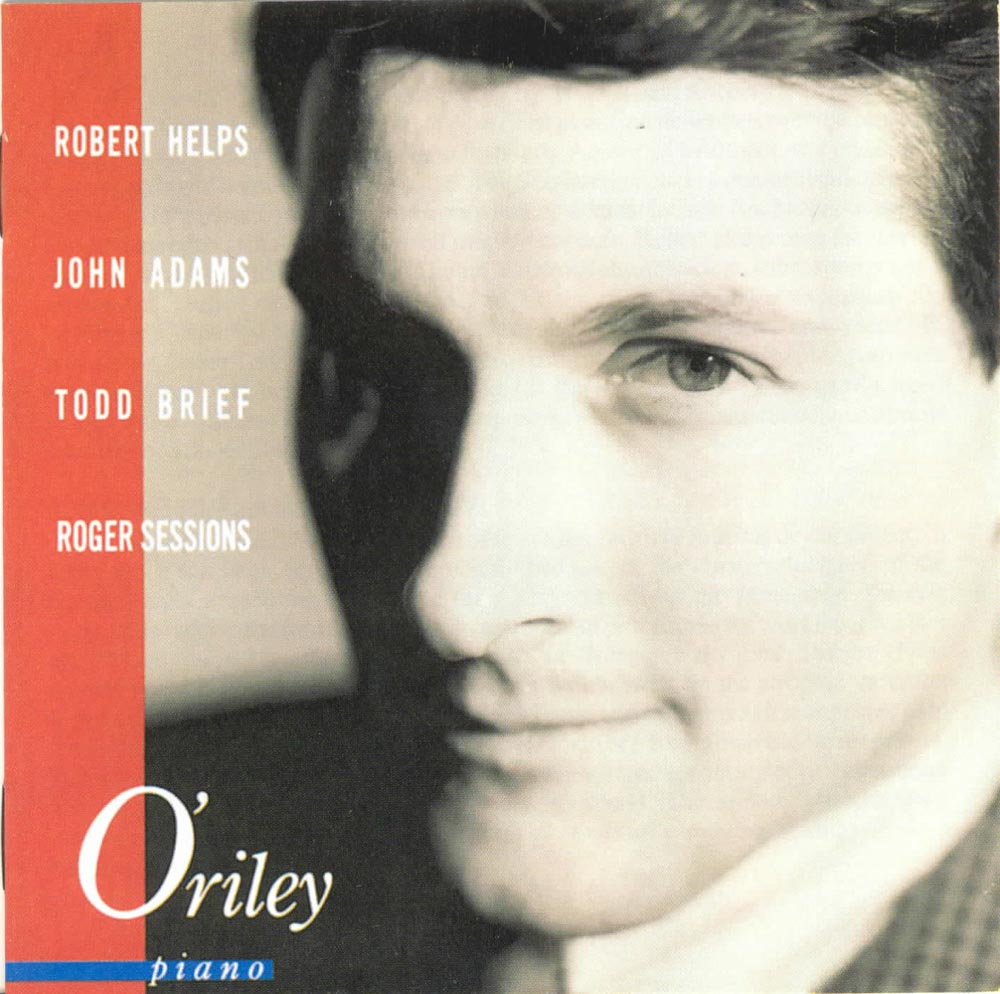Catalog #: TROY0225
Release Date: February 1, 1997InstrumentalAlbany Records is proud to present the first disc ever devoted to the music of the great American composer, Edgar Stillman Kelley. Kelley grew up among the pioneers from New England and New York who founded Sparta, Wisconsin. He was a direct descendant of the Plymouth Colony Governor William Bradford. Sparta was no ordinary frontier village. Its Yankee settlers were lovers of music and literature and as a boy Kelley took every opportunity to steep himself in both. His mother was a writer and musician and his father was a writer and newspaper editor. While drawn to both writing and painting, Kelley decided early on to become a composer. He studied at home first with a young tutor from Germany, who had just arrived from Leipzig, and then in Chicago, where he remained for two years. He then went to Germany, where he studied with the best teachers of the day and was exposed to the music of Wagner, Liszt, Berlioz and Chopin. In 1880, he returned to America and San Francisco, where he took a job as an Organist. He composed all the time. He married a singer, who helped him promote his music. He also taught at Western College in Oxford, Ohio. He went to New York where he became a friend of Victor Herbert and even taught a semester at Yale, where he conducted the New Haven Symphony. The history of music in America is filled with musicians like Edgar Stillman Kelley. Like so many of his American contemporaries, Kelley professed to be nothing more than entertaining. He succeeds so very well as this disc devoted to his music proves. An edition of the piano music of Edgar Stillman Kelley, edited by Brian Kovach has recently been published by Mel Bay Publications.
Catalog #: TROY0219
Release Date: December 1, 1996InstrumentalLola Odiaga, the Peruvian harpsichordist and fortepianist, studied piano at the Juilliard School of Music in New York and at the Hochschule fur Musik in Hamburg, and harpsichord at Yale University. She holds degrees from the Juilliard School and Yale University and studied with Edward Steuermann and Ralph Kirkpatrick. She has taught at the National Conservatory of Music in her native Lima, Wellesley College, the Hartt College of Music, the Yale University School of Music and Boston University School of the Arts. Since 1983, she has only been performing on the fortepiano. The fortepiano used in this recording is a copy of an Anton Walter instrument dated c. 1790, built by Rodney Regier of Freeport, Maine. It has a compass of just over five octaves and - as was the case with the fortepianos of the period - in many ways resembles the harpsichord more than the modern piano. It has a wooden rather than a metal frame and is strung at a lower tension with lighter gauge strings. These features of its construction are directly related to a clear and distinct tone throughout its range.
Catalog #: TROY0211
Release Date: November 1, 1996InstrumentalThis is such an unusual album, such an unusual concept filled with such imagination, I will quote the artist, Jeanne Golan, who currently teaches at Bard College to give you an idea of what this disc is about. "As a pianist who performs contemporary music and works directly with composers as colleagues and friends, I have become increasingly intrigued by the issues with which composers contend in the musical expression of their thoughts. In extending this approach to music of different generations, I have been inspired to discover the ways in which composers of traditional repertoire dealt with these same issues and ultimately employed compositional methods that also stretched the boundaries of what was considered possible to create a unique university in each piece. This approach has not only allowed me to view every piece as "contemporary," but has also affected my choices in programming. Searching for works that complement each other has repeatedly revealed kinships between composers and pieces that initially seemed unrelated. I have often found that composers, though from different eras and places, grapple with the same issues, often resolving them in similar ways. The primary issue behind the collection of piano works assembled on this disc is the structuring of time, hence the title Time Tracks. Its repertoire incorporates two extreme approaches to time: one the approach that transcends it, as seen in the works by Beethoven and Curran, the other that specifically defines it both rhythmically and historically, embodied by the works of Granados and Nancarrow. Both Beethoven and Curran are composers reckoning with mortality - Beethoven with his own, Curran with his recently deceased friend, Cornelius Cardew." Ms. Golan has rethought ways to program contemporary music and her ideas certainly work on this new recital disc.
Catalog #: TROY0209
Release Date: November 1, 1996InstrumentalThis fascinating disc contains 30 of the most popular carols in "impossible" arrangements. Gordon Green writes: "Every year at Christmas time I'm struck by the predictability of most of the Christmas music that crowds the record stores and airwaves. In this collection, I show the Christmas classics in a different light. I take a fresh look at some of the best melodies in circulation." The "fresh look" Green is talking about uses just synthesizers to create the music and catchy and appealing it is.
Catalog #: TROY0203
Release Date: September 1, 1996InstrumentalThis is an interesting recital. It is good to see the piano music of Shchedrin and the Bulgarian composer Vladigerov beginning to appear on CD. Krassimira Jordan was born in Varna, Bulgaria of Russian and Bulgarian parents. She studied in Sofia, Vienna and Moscow and was a pupil of Stanislav Neuhaus and Emil Gilels. She became a naturalized citizen of Austria and became Professor of Piano at the Vienna Academy of Music and Dramatic Arts from 1979-1989. After her American debut at Carnegie Hall in 1989, she joined the faculty of the Baylor University School of Music as Artist-in-Residence and Professor of Piano. Highly regarded as a teacher, her students come from all parts of the world and have won top prizes at numerous international piano competitions. She is a fine performer and this music suits her temperament perfectly. As a result, this is a most satisfying disc.
Catalog #: TROY0205
Release Date: August 1, 1996InstrumentalRobert Starer was born in Vienna and received his musical education at the State Academy in Vienna, the Jerusalem Conservatory and Juilliard. He has lived in New York since 1947 and became a United States citizen in 1957. Among his honors are two Guggenheim Fellowships. He was elected a member of the American Academy of Arts and Letters in 1994. In 1996 he was awarded the achievement award by the Music Teachers National Association "in recognition of his distinguished career in music and outstanding contributions to his profession as composer and educator." The pianist, Gerald Berthiaume, is currently as Associate Professor of Music at Washington State University where he serves as coordinator of keyboard studies. Prior to his appointment there in 1989, he served in a similar position at Lamar University in Beaumont, Texas. He is a graduate of the New England Conservatory of Music. This recital of Robert Starer's piano music offers a broad sampling of the music of a wonderful American composer.
Catalog #: TROY0193
Release Date: July 1, 1996InstrumentalErnest Schelling - child prodigy, virtuoso pianist, composer, conductor, patron and founder of the Children's Concerts with the New York Philharmonic - was one of the most brilliant and enterprising personalities on the American scene in his day. As a pianist, he appeared frequently with every major Orchestra, often as soloist in his own piano and Orchestral works. His Violin Concerto was premiered by Fritz Kreisler and the Boston Symphony under Karl Muck and his "Victory Ball" was a crowd pleaser in its day. Schelling was trained entirely by his father, Dr. Felix Schelling, a physician and musician from St. Gallen in Switzerland. He made his piano debut at the Academy of Music in Philadelphia on March 8, 1880 at the age of four-and-a-half. At the age of seven, he entered the Paris Conservatory, the youngest pupil ever accepted. Here he studied under Georg Mathias, a pupil of Chopin. In 1896, his career changed when he became the only pupil of Ignance Jan Paderewski who enabled him to make the difficult transition from child prodigy to mature artist. The two pianists became life-long friends. He made his London debut on November 25, 1900 and his American debut as an adult on January 24, 1905. The last 17 years of his life attracted the attention of the music world when he created the Children's Concerts of the New York Philharmonic during the 1923-24 season. He was called "the musical godfather of America's younger generation." He conducted 187 of these concerts in New York alone, as well as in other cities from Boston to San Francisco. From 1930 on, they were broadcast live by CBS from coast to coast. In 1939, he was scheduled to inaugurate these concerts in London, but tragically, he died before he ever got there. The music contained on this disc is charming and appealing. Mary Louise Boehm is an authority on Schelling and has studied his music extensively.
Catalog #: TROY0185
Release Date: January 1, 1996InstrumentalThe eight early works of Haydn featured on this recording, though variously titled partita and divertimento, are sonatas in all but name. They are committed to the new sonata style of the mid-eighteenth century, most often comprising three movements, the dance elements of the suite and partita having receded to a secondary role. At the time of their composition, probably between 17545 and 1765, Haydn was Kapellmeister to Count Morzin. He entered the service of the Esterhazy family as Vice-Kapellmeister in 1761. Beyond this, and the speculation that they may have been performed by the composer at court or used as teaching pieces, it is impossible to reconstruct their biographical and social context. Unpublished in the composer's lifetime, the works survive in manuscript copies bearing attribution only to Haydn. Only a single work, Hob.XVI-6 survives in an autograph manuscript and this is undated.
Catalog #: TROY0169
Release Date: November 1, 1995InstrumentalDonald Martino began music lessons at the age of nine; learning to play the clarinet, saxophone, and oboe. He started composing at 15. He attended Syracuse and Princeton Universities. He is a member of the American Academy of Arts and Letters and the American Academy of Arts and Sciences. He has received two Fulbright scholarships, three Guggenheim fellowships and grants from the NEA. He won the Pulitzer Prize in 1974 for Notturno and in 1985 the Kennedy Center Friedheim Competition for his String Quartet. He has taught at the Third Street Music School Settlement in New York, Princeton University, Yale University, the Yale Summer School of Music and Art, Tanglewood, the New England Conservatory of Music, where he was chairman of the composition department from 1969-79, Brandeis University, where he was Irving Fine Professor of Music, and Harvard University, where he is currently Walter Bigelow Rosen Professor of Music Emeritus. Prize-winning pianist David Holzman has performed the 20th century's most challenging masterpieces throughout the United States and abroad. He has premiered works by more than 100 composers from around the world. He studied with Paul Jacobs and Nadia Reisenberg. He began his solo career in the 1980s and has earned consistent praise for his virtuoso performances. Andrew Porter, writing in The New Yorker has described him as a "master pianist." This disc contains exciting performances of fine American piano music.
Catalog #: TROY0162
Release Date: August 1, 1995InstrumentalIn his notes for this disc, Mark Fisher, the euphonium player, writes: "My intent with regard to the literature selection for this recording was simply to present a recital. Included are two of the most important and original works in the repertoire, the Jan Bach and the Gordon Jacob. Combined with other borrowed favorites, this program was designed to, through great variety, take advantage of the euphonium's split personality: not only that of tenor tuba but also tenor horn, as is evident here in the range of J.S. Bach's E-Flat Major Sonata for Flute. Octave differential aside, the style and shape of the musical line make for a perfect fit on the euphonium. The Lieder (originally for two voices) of Brahms were originally and wonderfully transcribed for two horns by Verne Reynolds. His skilled arrangement and the wonder of overdubbing make for a rich sound indeed. The bassoon literature has never escaped low brass thievery and the great f-minor sonata by Telemann lies perfectly in the heart of the euphonium range. I believe the Concert Variations by Jan Bach to be the finest work ever composed for the euphonium and I was so proud that he was in the studio with me when we made this recording. The recording concludes with one of the great park band solos and most recognizable of all cornet tunes, the Carnival of Venice."
Catalog #: TROY0161
Release Date: August 1, 1995InstrumentalAt Albany Records we believe in the talent of Joseph Fennimore, both as composer and a superb pianist. The piano recital on this disc is wonderful, but as an added bonus, this album has program notes, composed by Mr. Fennimore: "Food, Lies and Audiotape," which are very funny indeed. Here is a taste of his writing. "Most pianists' bios are depressingly similar. Pre-natal study, debut at two, the Shangri-La of conservatories, a list of competition triumphs, galactic appearances, carefully selected blurbs all calculated to imply the subject will become a household name any moment now. Just waiting for that lucky break. An American myth. Things don't work that way anymore, if they ever did. Who wants to be a household name anyway? Not me. I want to be a special thing for a special few - a few more that is." Fennimore then goes on to tell how he was unable to get along with people in the business of music. However, he was able to get along with the people at Albany Records. For us his music is special: to be enjoyed. Other Fennimore titles include TROY102 (Fennimore in Concert I), TROY023 (Selected Vocal Works), TROY065 (Chamber Music) and TROY113 (Selected Piano Music.)
Catalog #: TROY0147
Release Date: February 1, 1995InstrumentalThis disc is another volume in the series of complete keyboard works performed by the acclaimed fortepianist Lola Odiaga. See information for TROY045, TROY062 and TROY094.
Catalog #: TROY0146
Release Date: January 1, 1995InstrumentalAs Joseph Fennimore writes in his notes for this very well documented CD, "Ms. Verbit is the first pianist to have undertaken the Olympian task of deciphering and recording these early pieces of Antheil. She uniquely has the requisite tenacity, skill and resources for the task. Dedication is the word. Her researches have been thorough, her relationship with Antheil becoming deeply personal even though they never met. Everything about him that could be known, she has learnt. When she refers to Antheil as "George," one has the feeling he asked her to call him that."
Catalog #: TROY0135
Release Date: December 1, 1994InstrumentalThe two piano sonatas contained on this recording are among the finest examples of piano writing by two leading composers of the so-called Leningrad School, a group of Soviet composers raised and trained in Leningrad who came to prominence in the generation following Shostakovich. The fame of this group, which includes Sergei Slonimsky, Boris Tishchenko, and Andrei Petrov, springs from their innovative and individual approaches to musical composition. Sergei Mikhailovich Slonimsky was born in Leningrad on August 12, 1932. His father was a prominent Soviet writer Mikhail Slonimsky, and his uncle the Russian-American conductor and musical lexicographer Nicolas Slonimsky. Slonimsky received his training and served on the faculty at the Leningrad Conservatory, teaching composition and music theory. Boris Ivanovich Tishchenko was also born in Leningrad on March 23, 1939. Like Slonimsky, Tishchenko attended the Leningrad Conservatory. He pursued postgraduate work with Dmitri Shostakovich and became a close friend and perhaps, the most gifted pupil of the older composer. The works on this recording are performed by the Russian-American pianist Sedmara Zakarian Rutstein. She attended the Special Music School for gifted Children in Leningrad and later the Leningrad Conservatory. After completing her graduate and post-graduate studies, she was invited to join the faculty, a position she held until she departed for the United States in 1974.
Catalog #: TROY0117
Release Date: July 1, 1994InstrumentalGeorge Walker was born in Washington, DC on June 27, 1922 of West Indian-American parentage. He graduated from high school at the age of 14, attended Oberlin College and the Curtis Institute of Music where he studied piano with Rudolf Serkin and composition with Rosario Scalero. His auspicious debut at Town Hall in 1945 was described in the New York Times as "notable...an authentic talent of marked individuality and fine musical insight...a rare combination of elegance and sincerity...an understanding, a technical competence and a sensitiveness rarely heard at debut recitals." Walker obtained his Doctor of Musical Arts Degree from Eastman and went on to study in France with Nadia Boulanger on Fulbright and John Hay Whitney Fellowships. His compositions have been played by virtually every major orchestra and chamber orchestra in the United States. This recording uniquely showcases the pianist as composer-composer as pianist as Walker performs his Sonata No. 1.
Catalog #: TROY0096
Release Date: April 1, 1994InstrumentalIn his tragically short career (he died at age 18), Aliosha Nikolaev (1959-1977) wrote not only piano music but two Romances based on texts of Pushkin, a quintet for two violins, one viola, and two cellos, a trio for two flutes and cello, and in 1984 a suite for oboe and piano. Many of Aliosha Nikolaev's compositions present to a large extent, vivid and colorful interpretations of Russian folk fairy tales, of which The Tin Kingdom is an example. The Cat's Hut is based on a play written for the children by Russian poet Samuel Marshak. Boris Tishchenko was born in Leningrad in 1939 and is a graduate of the Leningrad Conservatory. His list of credit sis in keeping with his status of one of the geatest composers of our time. He is a recipient of hte title People's Artist of Russia and of the Russian Federation's prestgious Glinka Award. He is a master of the large forms, having written one opera, one operetta, three ballets.
Catalog #: TROY0113
Release Date: February 1, 1994InstrumentalJoseph Fennimore has written songs, chamber music, orchestral works, and two one-act operas. His works have been performed by the Chicago Symphony, the Metropolitan Opera Studio, the New York City Ballet, at the Almeida Festival in London, and the Ravinia, Saratoga Performing Arts Center, and Tanglewood festivals, among others. His music has been performed nationwide, in Europe and Japan and broadcast worldwide on Spectrum, Nonesuch, and Albany Records. Born in New York City, Fennimore has been composing since childhood. He attended the Eastman and Juilliard Schools of Music, receiving degrees with honors from both. After a brief but distinguished career as a pianist, he founded and or its first five years directed the Hear America First Concert Series in New York City devoted to American music. The piano works on this disc include Armistice, a set of three pieces named for the intermission between the two world wars; Variations on a Theme of Beethoven; The Woolworth Man and The Hen's Snuffbox are stylized rags taking their titles from poems in Afro-American dialect by Herbert Woodward Martin. Foxtrot is a sonata in two movements. Blues conjures smoky bars, a haze of booze, hangovers and regrets for the sour love of one-night stands. An Old Soft Shoe is danced by a vaudeville tatterdemalion in top hat and tails, deftly bouncing his rubber cane, executing comic bits and pratfalls while proudly recalling better times long gone. Bernini's altarpiece of St. Teresa in ecstasy and St. Teresa's own writings about the experience give some notion of the central portion of the Second Romance: Calentura de Teresa. The first performance of Concerto Piccolo was at the Eastman School with Howard Hanson conducting.
Catalog #: TROY0102
Release Date: November 1, 1993InstrumentalThe people who remember Joseph Fennimore's piano playing in the late 1960s and early 1970s still talk about it with admiring astonishment. "A pianist of talent and temperament," declared the New York Times after Fennimore's 1967 New York City debut. "He was wonderful," echoed the Washington Post a few years later, "a rarity in an age of fine pianists." Still another reviewer summed up his review thus: "Joseph Fennimore is the name. If the concert managers, booking agents and the public have any sense at all you will be hearing more of it." To anyone familiar with Fennimore's musical personality and the subsequent development of his career, reading such statements gives a twinge. In 1974, with what looked like a career of enormous promise ahead, he gave a farewell recital in New York; apart from a couple of appearances as an accompanist, he hasn't played in public since. Born in New York City on April 16, 1940,.Fennimore grew up in the upstate towns of Ballston Spa and Scotia. He began piano study at six and at 13 made his first appearance with an orchestra. He continued his studies at the Eastman School of Music, where he was a piano student of Cecile Genhart. At the Juilliard School, where he subsequently received a master's degree, his teacher was Rosina Lhevinne. What has struck many who have heard Fennimore's playing - quite aside from the obvious brilliance and expressiveness - has been its remarkable spontaneity. It is music-making utterly uninhibited by academicism, though that statement implies no lack of intellectual content. Rare, in fact, is a musician so widely read, so intellectually probing, so articulate as Fennimore.
Catalog #: TROY0097
Release Date: September 1, 1993InstrumentalThis is a disc that contains music that should be pleasing to everyone. Berends composes in a style that is romantic and accessible. He was born in Baltimore where he graduated from the Peabody Conservatory with honors in 1973. In 1978, he received a Bachelor of Science degree in Electrical Engineering from Princeton University in a curriculum emphasizing electronic and computer-generated music. The music contained on this disc is about as far removed from what one normally associates with a composer with these credentials as one could imagine. In this 30 years as a keyboard artist, he has performed with everyone from jazz guitar innovator Stanley Jordan to Rock and Roll pioneer Chuck Berry. Fifteen Exceptions for Piano is a collection of his original piano music written between 1978 and 1991.
Catalog #: TROY0094
Release Date: August 1, 1993InstrumentalLola Odiaga, the Peruvian harpsichordist and fortepianist, continues her series of the complete works of Haydn for piano with this disc that features five sonatas from 1776. The mid- and later 1770s saw a relaxation in Haydn's compositional style, a move away from the stormy melancholy of the many minor key works written in the late 1760s and early 1770s. It is no coincidence that this was also a period in which the composer strengthened his ties with Vienna where he eventually took up residence in 1791. The "six sonatas of 1776" (so called in Haydn's catalog of his own works), of which five are featured on this recording, were the official property of Haydn's patron Prince Nikolaus Esterhçzy, but they could be purchased in Vienna, in manuscript copies, and from professional copy shops. Each sonata on the program ends with a finale in variation form, based either on a minuet or a contredanse, and this, along with the use of the minuet and trio as an internal movement, and the elements of folk song, suggests that in writing his six sonatas of 1776 Haydn aimed to appeal (though not to pander) to current Viennese taste. The fortepiano used in this recording is a copy of an Anton Walter instrument dated ca. 1790 built by Rodney Regier of Freeport, Maine. It has a compass of just over five octaves and - as was the case with the fortepianos of the period - in many ways resembles the harpsichord more than the modern piano.
Catalog #: TROY0084
Release Date: May 1, 1993InstrumentalThe artist Hans Hofmann once described a painting to a critic as stemming from unbreakable rules. Then he immediately turned to another of his paintings and said he never thought while painting: it interfered with his spontaneity. Sherman's music is that same contrapuntal fission of rule and rebellion, skeleton and soul: structure informed by passion, the premeditated speech tripped up by the spontaneous touch, the push and pull of mind against gland, the classical cape against the romantic thigh, the German scholar and Hungarian guerilla fused so that both exist simultaneously at any given time. As the New York Times has said, "It was the kind of fantastical piano program that Horowitz's playing might have splintered apart with fireworks...But when Russell Sherman played these compositions in Alice Tully Hall the music was glittering, but not fractured; it made sense along with its sound." Sherman is the pianist's pianist, his concerts filled with excited musicians. If you have not been lucky enough to attend his rare, tortured, and ecstatic concerts, we hope this lush Schubert album with its seething undercurrents will, along with his 20-odd other recordings, provide some consolation.
Catalog #: TROY0087
Release Date: April 1, 1993InstrumentalThe guitar has always been a pillar of musical expression in Latin America. Its personal character reflects the strain of individuality in Latin cultures. Twentieth Century luminaries including Heitor Villa-Lobos, Carlos Chavez and Alberto Ginastera, have paid homage to the guitar through their compositions. Contemporary Latin American composers continue the tradition of these musical giants. Composers on this recording, all different in their musical approach, share a special feel for the guitar. Roque Cordero (Panama-USA), Tania Léon (Cuba-USA) and Rafael Aponte-Ledée (Puerto Rico) employ techniques of atonal composition while fusing regional elements. Edmundo Vçsquez, the Paris-based Chilean composer, utilizes traditional folkloric structures elaborated by the techniques of current musical idioms. United States born Francis Schwartz, who has made Puerto Rico his home, uses the guitar and the guitarist as features of a music theater work which includes vocal sounds and gestures from the audience. The renowned Argentinian composer, Astor Piazzolla, added classical training to his vast popular musical experience as a bandoneon player. Piazzolla highlights in these guitar pieces the harmonic language he used to rejuvenate the traditional tango.
Catalog #: TROY0069
Release Date: August 1, 1992InstrumentalSchubert made an extraordinary contribution to the four-hand repertoire, and his compositions in the form span his entire career. In all, he wrote some 60 works for piano four hands, many of which rank among his most profound and inspired creations as well as his most charming and delightful. It is clear that Schubert did not consider it simply occasional music, but as a serious medium that was perhaps more natural to him than the composition of solo piano music. In fact, Schubert made his first public performance as a pianist in March 1818 performing his own four-hand arrangement of the Italian Overture in D Major on two pianos with Ansel Huttenbrenner. And when he decided to approach Beethoven, whom he worshipped, it was with a four-hand work, the Variations in E Minor, which made a favorable impression. Schubert was also extremely demanding that the pianists he performed with were first rate and once commented that "this damned bashing, which is to be found among even the most renowned pianists, I cannot stand. It delights neither the ear nor the heart." One of Schubert's favorite partners was Josef von Gahy who described his playing: "the sometimes tender, sometimes flowing and bold performances of Schubert, who played the primo part, his strong technique, and free interpretation made the hours of playing together delightful and unforgettable."
Catalog #: TROY0071
Release Date: July 1, 1992InstrumentalMarthanne Verbit was born in Atlanta and raised in the small town of Fitzgerald, Georgia. She spent her childhood either at a piano or in toe shoes, with frequent appearances on television, at music festivals and in theatrical productions in Florida, North Carolina and Georgia. She left the deep South to attend Hollins College and Boston University School for the Arts, receiving music degrees from each. Further studies at the Eastman and Juilliard Schools and Columbia University kept her in the North. Widely acclaimed for her flair, poetic fantasy, insightful musicianship and unforgettable stage presence, Verbit's piano recitals through the United States and Europe have established her as a favorite among piano connoisseurs. This piano recital includes works by George Gershwin (1898-1937); George Antheil (1900-1959); John Diercks (b. 1927); Joseph Fennimore (b. 1940); Leo Ornstein (1892); and Cyril Scott (1879-1970).
Catalog #: TROY0070
Release Date: July 1, 1992InstrumentalMarthanne Verbit comments: "We are now such a long way from the optimism, excitement, intellectual ferment and urge to experiment prevalent at the outset of the nineteenth century that it is difficult to believe all this really existed. The various movements that flourished during this era - impressionism, expressionism, futurism, cubism and neo-classicism, to name just a few - brought about a flood tide of music for the piano, this as diverse as the "movements" that inspired it. Perhaps at this point, we can listen with fresh ears to two of these earliest trend-setters, Cyril Scott and Leo Ornstein."
Catalog #: TROY0062
Release Date: December 1, 1991InstrumentalMozart and Beethoven were renowned pianists, while Haydn, in his own words "was not a wizard on any instrument." Yet recent research has emphasized the special significance of keyboard music and performance in the composer's life. Not only did he perform as soloist, organist and accompanist during his tenure at Esterhçzy but throughout his creative life Haydn cultivated the most respected genre of solo keyboard music - the sonata. The first three sonatas of this program were composed in 1773. They were published by Giuseppe Kurzback in Vienna in 1774, appearing in a set of six sonatas that Haydn dedicated to his patron Prince Nikolaus Esterhçzy. This was Haydn's first authorized publication, although copyists had been smuggling his works into print for some time. An obsequious dedication to Prince Nikolaus reminds us that Haydn's compositions were the official property of his patron. The last three sonatas in this program were written during the 1770s and published in Vienna by Artaria in 1780. A new contract between Haydn and his patron, dated 1779 reveals that Prince Esterhazy no longer had exclusive rights over Haydn's compositions. These sonatas appeared in a set of six dedicated to Katharina and Marianna von Auenbrugger, sisters who were celebrated fortepianists.
Catalog #: TROY0052
Release Date: September 1, 1991InstrumentalChristopher O'Riley combines a piano technique of remorseless brilliance with a fastidious musical intelligence. He has asserted himself as one of the most formidable and best-loved pianists of his generation. He appears throughout the United States and Europe as a recitalist, soloist with orchestra, and chamber musician. His repertory encompasses the literature of the eighteenth, nineteenth, and twentieth centuries. O'Riley, who was born in Chicago and reared in Pittsburgh, launched his career by winning prizes in the major international piano competitions. A pianist in the grand manner, he especially favors the colorful, large-scale works of the uniquely pianistic master composers like Chopin, Liszt, Ravel, Scriabin, and Schumann. O'Riley's playing is, of course, the product of his distinct personality. But there can be little doubt that his profile as an artist is also the result of the dramatic tension between the stern conservatism of his musical training and the sensuous flamboyance of his own innate temperament. He is at once architect, dramatist, colorist, and dancing master; he is the intellectual's hedonist.
Catalog #: TROY0045
Release Date: March 1, 1991InstrumentalThe keyboard sonata is an intimate genre suited to experiments in form and style. Haydn's cultivation of the sonata in all but the last years of his life creates a detailed illustration of his compositional development. The five sonatas recorded her reflect a relaxation in Haydn's compositional style, turning away from the stormy melancholy of the many minor key works written before 1772. Lola Odiaga, the acclaimed Peruvian harpsichordist and fortepianist, studied piano at the Juilliard School of Music in New York, and at the Hochschule fur Musik in Hamburg, and harpsichord at Yale University. Among her teachers were Edward Steuermann, Stefan Askenase, and Ralph Kirkpatrick. In addition to a teaching career that has included the National Conservatory of Music in her native Lima, Wellesley College, the Hartt College of Music, the Yale University School of Music, and Boston University School for the Arts, Odiaga has concertized as soloist with orchestras, and in solo and chamber music recitals in the United States and Latin America both as pianist and harpsichordist. Since 1983 she has been making appearances as a fortepiano performer.
Catalog #: TROY0039
Release Date: February 1, 1991InstrumentalThis recording demonstrates three aspects of the towering genius of Liszt - the virtuoso, the transcriber, and the visionary. Throughout most of his life, Liszt was essentially a musical transcendentalist and evidence of this can be found in both his pianistic and compositional technique. No one had ever before asked a pianist to perform such technical difficulties that pervade his music. And while the sheer virtuosity of his works create enormous excitement there is also a stunning dramatic and emotional impact created by it. And yet when he chooses to speak in a simple, direct way he is masterful. These same qualities are clearly exhibited in his two-piano and four-hand works that number some 107 compositions and include original pieces, transcriptions, and reworkings of his own music. Indeed, the intrinsic greatness and scope of his work is indisputable.
Catalog #: TROY0038
Release Date: December 1, 1990InstrumentalA sonata by Roger Sessions, pieces by Todd Brief, Robert Helps, and John Adams: a thread connects this recital of American piano music written over the past half century or so. Each piece exemplifies a distinctly American treatment of a traditional form or style of composing for the piano. The Sessions sonata is a one-movement work whose infrastructure reveals a three-movement sonata format that Haydn himself might recognize. Robert Helps uses the theme-and-variations form to pay homage to Fauré's lustrous chromaticism. John Adams's two minimalist studies recall the toccata, one of the oldest styles for exploiting the keyboard's capacity for demonstrating varieties of touch, texture, and speed. In Nightsong, which Todd Brief began by improvising at the piano, the composer reminds us of the historic link between composers like J.S. Bach and Chopin, virtuosos who like to improvise at the keyboard, and jazz composers, whose performances consist almost entirely of virtuoso improvisation.
Catalog

©2024 Albany Records. All rights reserved. | Privacy Policy | Website by PARMA Creative.
